In Riverside, the new Cheech museum establishes a center of gravity for Chicano art
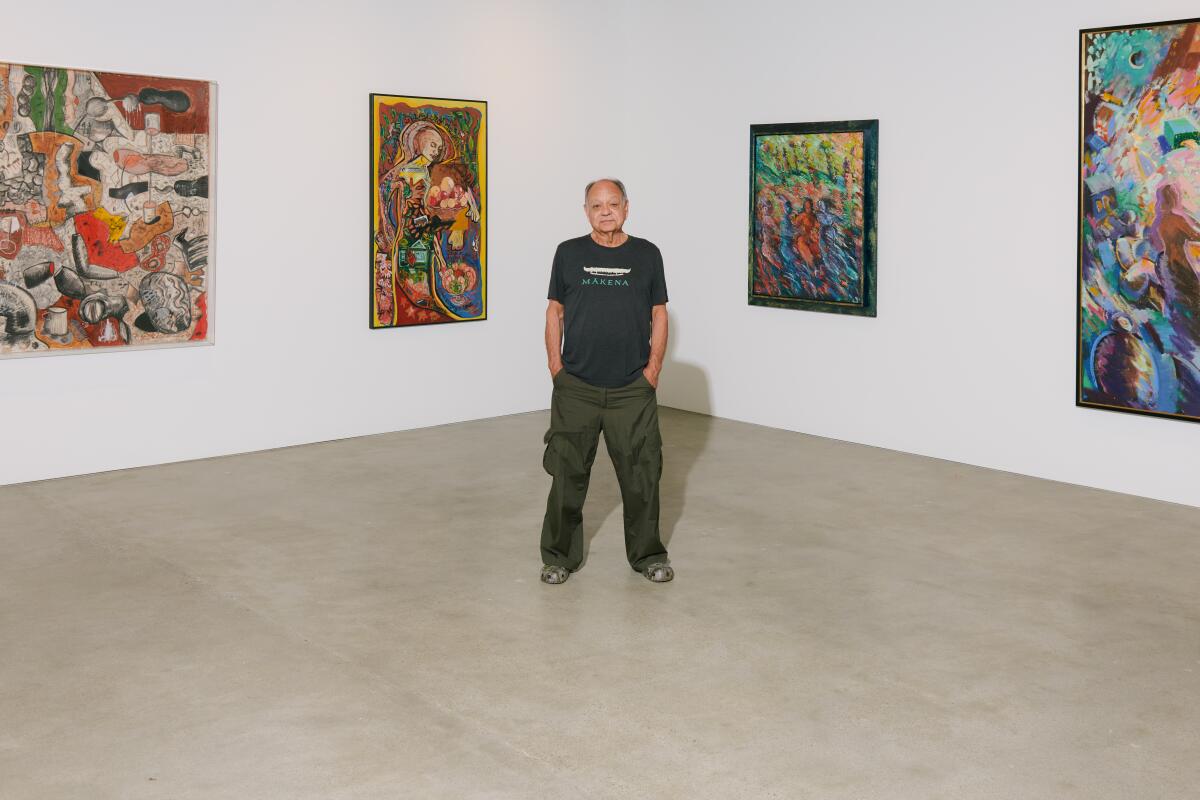
- Share via
I’m digesting the overturning of Roe vs. Wade. My colleagues at The Times podcast have been producing an incredible series of shows related to the future of abortion in 1, 2, 3, 4 and 5 parts. You can also read all of our related coverage at this link. I’m Carolina A. Miranda, arts and urban design columnist at the Los Angeles Times, with a tiny bit of joy amid so much rage:
Cheech Marin’s artistic vision
For more than three decades, actor Cheech Marin has been a devoted collector of art by Chicano artists. In that time, he has amassed hundreds of works — primarily figurative paintings — that serve as one man’s corrective to the elisions of work by Chicano artists from mainstream art history. This month, works from his collection went on view at a new arts center that bears his name: the Cheech Marin Center for Chicano Art and Culture, run by the Riverside Art Museum.
It is housed in a 61,000-square-foot former library building that was renovated by the team at WHY Architecture, led by Kulapat Yantrasast.

Times art critic Christopher Knight, of course, paid a visit. The building, he reports, has received a thoughtful refurbishing — though the lighting could use work.
The debut installation is built around several themes — such as urban landscape and activism — featuring now well-established figures including Carlos Almaraz, Frank Romero, Gronk, Judithe Hernández and Patssi Valdez, as well as lesser-known figures, such as Texas artist Joe Peña. Also on view is a separate exhibition of the “raucous pop sculptures” of Einar and Jamex De La Torre — “elaborate fusions of traditional blown-glass, souvenir shop lenticular optics and boisterous popular imagery.”
Although the collection is “a terrific nucleus” for a museum,” writes Knight, growth and diversification will be essential. “Marin’s tastes, for instance, are largely centered on L.A. painting since the 1980s, primarily by men, while Chicano art is wide-ranging in scope.”
The center, however, is now positioned to help write the history of art anew.
Make the most of L.A.
Get our guide to events and happenings in the SoCal arts scene. In your inbox once a week.
You may occasionally receive promotional content from the Los Angeles Times.
In related coverage: Independent arts writer William Poundstone provided some on-the-ground coverage of the opening.
“The Cheech is the Chicano Broad, or even more so,” he notes in his dispatch. “The Cheech probably has a higher proportion of quintessential pieces than the Broad does. Eli was competing with every other gazillionaire; Cheech was ahead of the market and institutional curve (the Chicano Albert Barnes?).”
Plus, a regional economist estimates that the new museum could generation $20 million in new spending in Riverside in the first year.
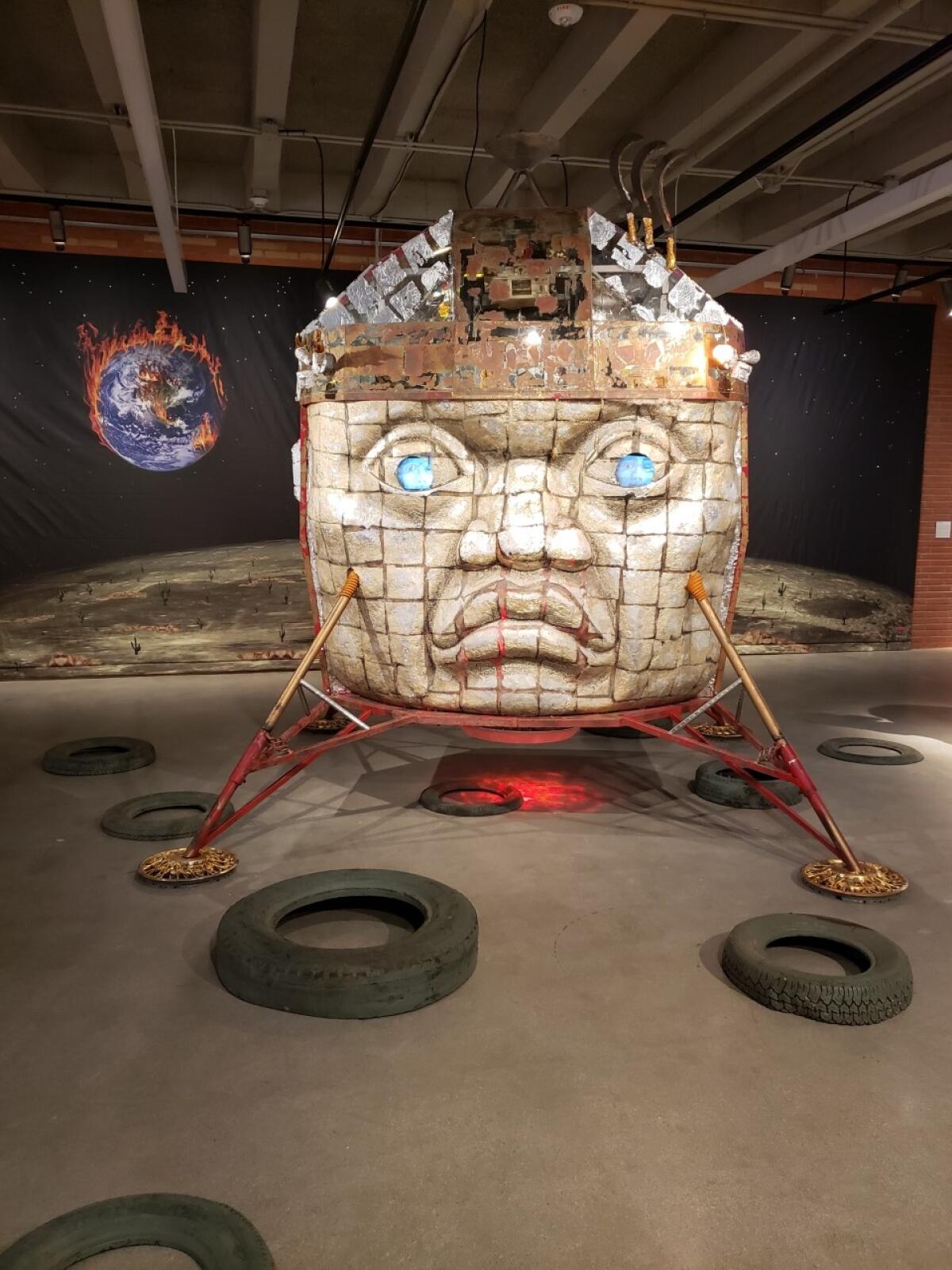
ICYMI, my colleague Melissa Hernandez profiled Marin in advance of the museum’s opening. “I don’t have to be French to appreciate Impressionism or German to appreciate Expressionism,” he tells her of his mission with the center. “We recognize it as part of the conversation in the history of art. And now we are part of that conversation in a more concentrated effort than we’ve ever had before.”
In a separate interview in the New York Times, Marin talked about what drew him to Chicano art to begin with. The work, he says, felt as if it “delivered news from the front,” like “listening to the Beatles for the first time.”
Because of other deadlines, I haven’t made it over to the museum yet. But scanning Instagram feeds from the opening days has been like seeing old friends — formative works I’ve seen in shows and in catalogs for years (OK, decades) but which haven’t been firmly planted in any one public space. Pieces like Romero’s monumental 1996 canvas, “The Arrest of the Paleteros,” Valdez’s charmed depictions of interiors or Ignacio Gomez’s iconic graphic of El Pachuco for Luis Valdez’s musical “Zoot Suit.”
I’m very much looking forward to making the drive to Riverside.
Visual arts
Perhaps now is a good time to switch gears to the art of Nueva España — a.k.a. New Spain. Christopher Knight also had a look at “Archive of the World: Art and Imagination in Spanish America, 1500-1800,” which recently opened at LACMA. The exhibition features 90 objects — mainly from Mexico but from several other territories in Latin America as well — part of a growing collection of viceregal works overseen by curator Ilona Katzew. The collection, writes Knight, casts an eye on a period of history that has often been overlooked by U.S. and European museums — works that capture “the vivifying tensions between multiculturalism and white supremacy coursing through art, which speaks so urgently to us today.”
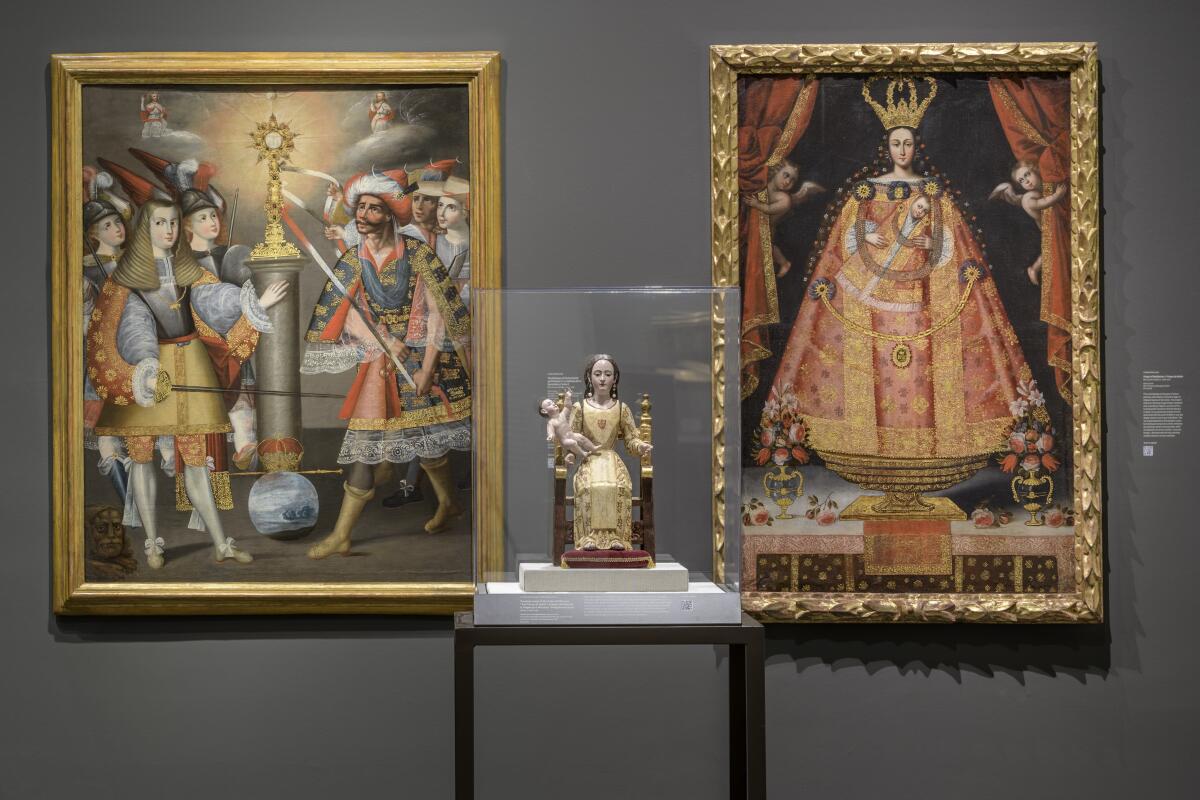
My colleague, Deborah Vankin, takes a gander at the intersection between pop culture and medieval life in “The Fantasy of the Middle Ages,” at the Getty Center, which features objects from the permanent collection, as well as loans from various California collections. It includes everything from a 15th century prayer book to background studies for films such as Disney’s “Sleeping Beauty.” The idea for the show, writes Vankin, “grew out of a popular social media campaign the museum launched in 2014 called ‘Getty of Thrones.’”
And Eva Recinos writes about the legacy of Los Four for KCET’s Artbound. The themes this pioneering Chicano group tackled, she writes, such as “cultural symbolism, social activism, East L.A. identity — feel extraordinarily relevant today.”
Let’s dance
Primera Generación Dance Collective’s new work, “Nepantla” — a term used to describe an in-between state or space — was years in the making. Begun as part of an arts residency, it evolved into a film for REDCAT, followed by the work’s live premiere at the Odyssey Theatre last month. The piece features dancers clad in broad quinceañera-inspired skirts emblazoned with icons of Latinidad — elements of which are discarded during the performance. “It became this really beautiful rasquache,” Irvin Manuel Gonzalez tells The Times’ Steven Vargas of the performance, “a mesh of Latinx futurity with ancestral things.”
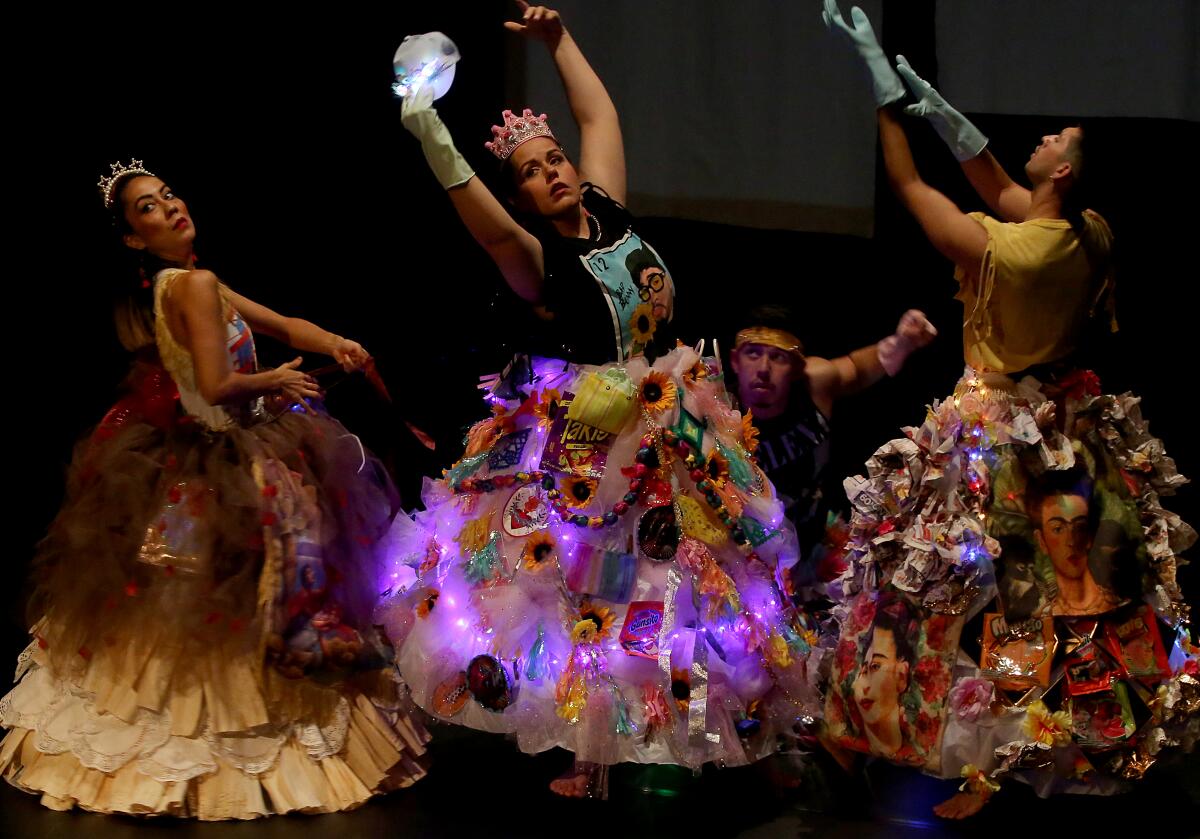
Since we’re on the subject of dance, I dug this story about dancing salsa in Syria.
Culture and abortion rights
Steven Vargas also reports on why the Fountain Theatre is staging readings of Lisa Loomer’s “ROE.” “The abortion issue is one of the most divisive, controversial issues facing our country,” says artistic director Stephen Sachs. “A lot of us already have strong opinions — one way or another — about it, but I think many of us aren’t really aware or remember how we got here.” Performances kicked off Thursday.
Enjoying this newsletter? Consider subscribing to the Los Angeles Times
Your support helps us deliver the news that matters most. Become a subscriber.
It’s also a good time to revisit the abortion paintings of painter Paula Rego, who died earlier this month.
On the stage
The Times’ Ashley Lee has a look at the Mark Taper Forum’s 2022-23 season. On the docket will be the premiere of a new musical inspired by the television show “Transparent,” as well as a new work by playwright Larissa FastHorse, “Fake It Until You Make It.” It’s part of a season of work by writers who identify as women, transgender or nonbinary.
Times theater critic Charles McNulty attended comedian Hannah Gadsby’s “Body of Work,” performed at the Theatre at the Ace Hotel late last week. If some of her previous work drew from personal tragedy, the current presentation was “more lighthearted and innocent,” writes McNulty. But her act nonetheless got the audience to think. “She wanted the crowd to think about the boundaries of comedy,” he writes, “even when enjoying a seemingly innocuous laugh.”
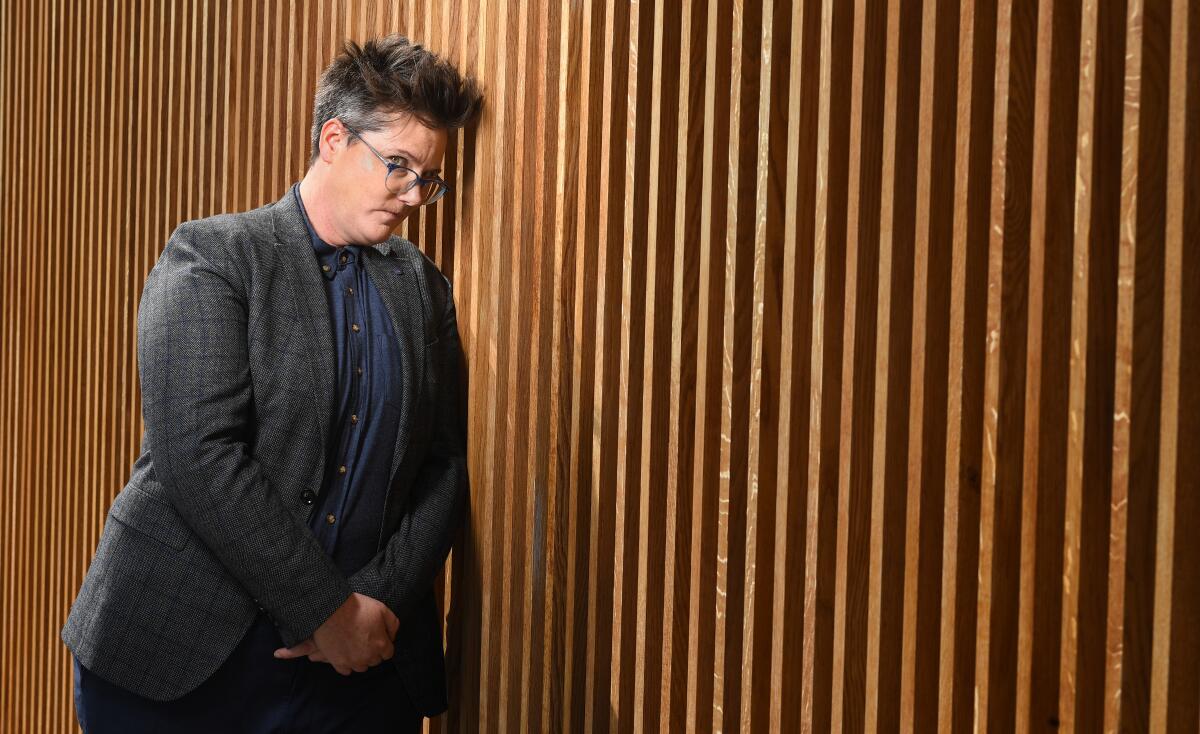
Classical notes
Los Angeles Opera and Long Beach Opera just ended their seasons with recent works by Pulitzer Prize-winning composers: Kevin Puts’ “The Brightness of of Light” and Anthony Davis’ “The Central Park Five.” Times classical music critic Mark Swed writes that they couldn’t have been more different — the former “a starry vehicle for soprano Renée Fleming and baritone Rod Gilfry” inspired by the love letters between Georgia O’Keeffe and Alfred Stieglitz; the latter centered on “the racist imprisonment of five teenagers falsely accused of rape in New York in 1989.” It all lands at a time in which both institutions are grappling with shifting expectations — and, in the case of LBO, an internal crisis.
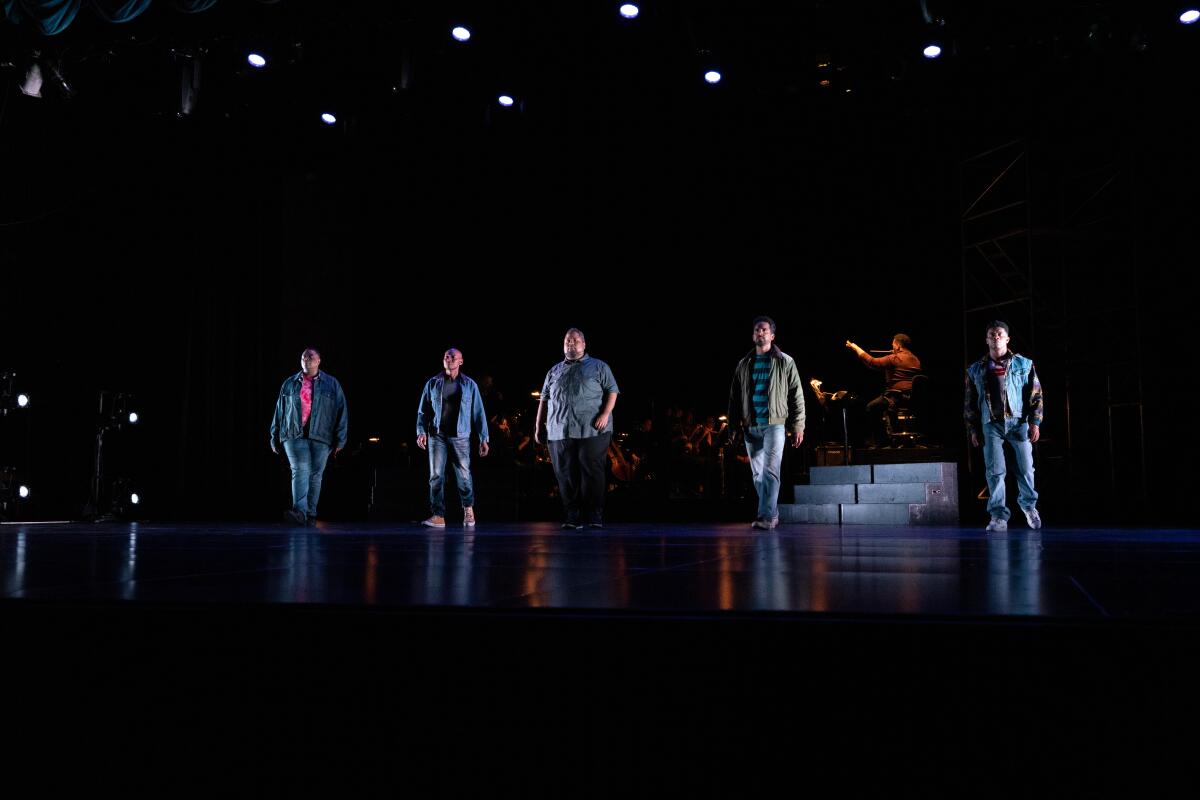
Essential happenings
Matt Cooper has the rundown for the weekend: 8 best bets that include the Hollywood Bowl Jazz Festival and a performance by Heidi Duckler Dance at Los Angeles State Historic Park in Chinatown.
I’ll be peeping at Mika Rottenberg’s brand new show at Hauser & Wirth. A few years back, I became completely absorbed by the artist’s pointed and absurd video installations in “Easypieces,” her solo show at the MCA Chicago.
I was particularly taken with a video piece titled “Cosmic Generator,” in which eye-popping color and surreal happenings are used to depict states of production, consumerism, labor and the seamless traversing of borders in our global economy. It’s deeply weird and quite comical, but also a bit haunting — one of those works of art my brain regularly returns to.
“Cosmic Generator” will be on view at Hauser & Wirth, as well as other works of video, drawing and installation by the artist.
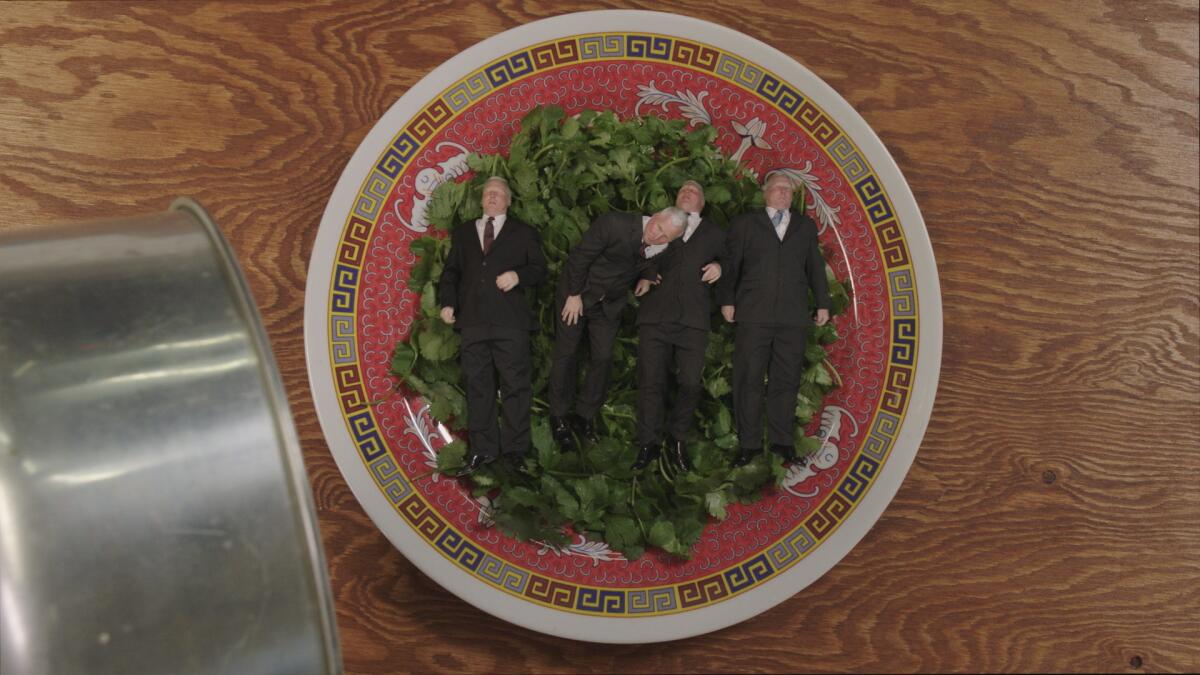
Passages
James Rado, who, with Gerome Ragni, wrote the story and lyrics for “Hair” and also appeared, in early performances, as one of its leads, has died at 90. The musical brought pop-rock to the Broadway stage and served as the debut work presented at New York’s Public Theater.
Interestingly, according to the New York Times obit, the musical’s title was inspired by an artwork by Jim Dine from the artist’s “Hair” series. Works from that series can be found in the collection of the Metropolitan Museum of Art.
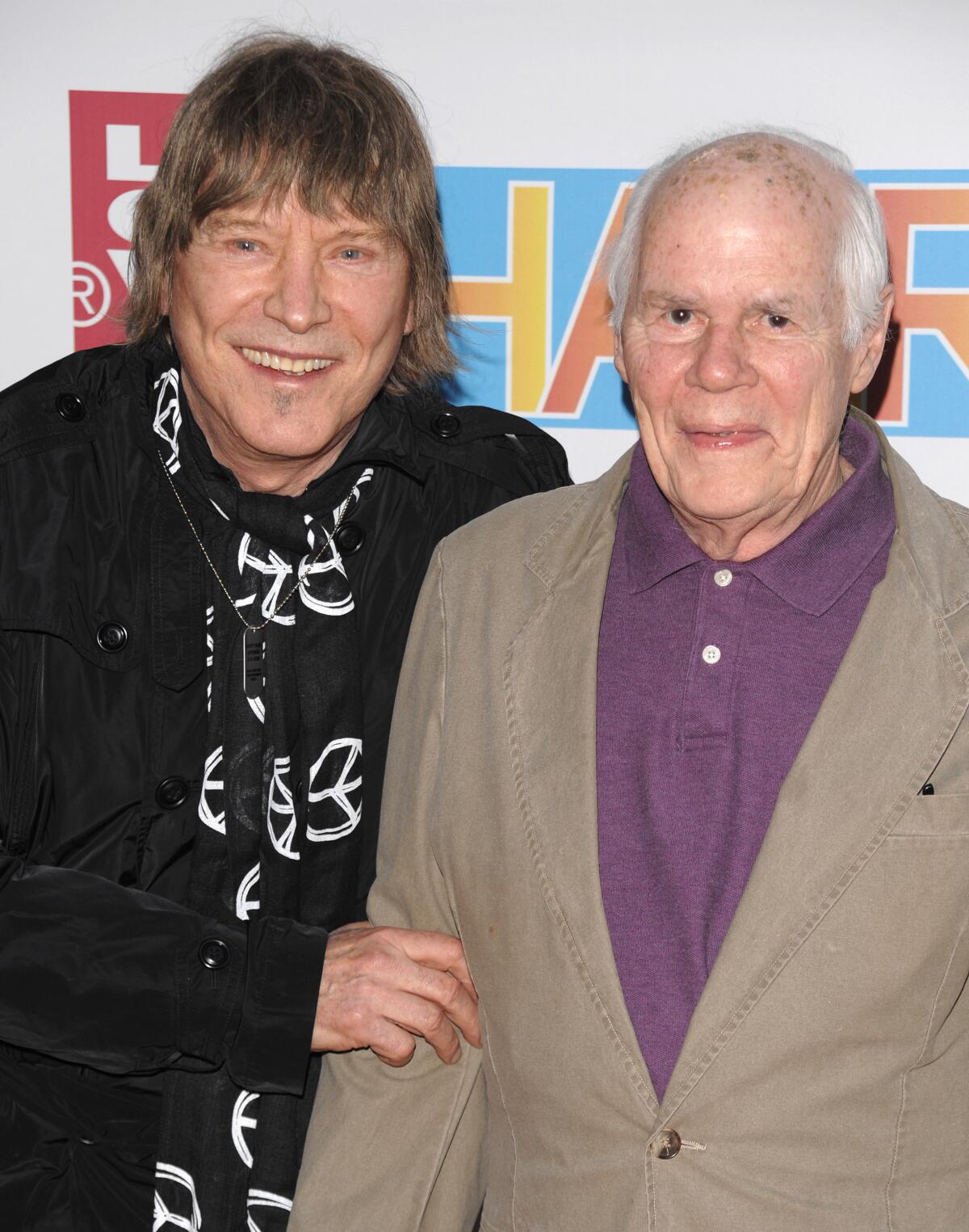
Vivian Hewitt, a librarian who, with her husband, amassed a notable collection of work by Black artists, including pieces by luminaries such as Romare Bearden, Elizabeth Catlett and Henry Ossawa Turner, has died at 102.
In other news
— When you create a design proposal for a museum in Fort Worth but accidentally use the Austin skyline in your rendering: the Dallas Morning News’ Mark Lamster has a look at the proposed Juneteenth museum by BIG.
— Some redevelopment is coming to the 1930s-era Saks buildings in Beverly Hills, designed by Parkinson & Parkinson, with a temple-like extension by Paul R. Williams.
— Architectural historian Ken Tadashi Oshima remembers the Nakagin Capsule Tower, with some great images by fala atelier.
— The Valentine museum in Richmond, Va., is displaying a statue of Jefferson Davis in its 2020 state: toppled and covered in paint. An intriguing way of historicizing a Confederate monument.
— “Monuments like those of Columbus are not controversial, but cruel.” A fascinating discussion about monuments between Michael Rakowitz and Erin L. Thompson.
— How to fix the housing crisis? Cancel zoning, says city planner M. Nolan Gray.
— Italy has opened a museum of ancient art that was trafficked.
— A gaggle of Tony-winning stars, including Laura Benanti, Kristin Chenoweth and Alan Cumming, will be part of a Broadway Cruise.
— Blast from the past: that time writer Greg Allen live-tweeted the end of Marina Abramović’s “The Artist Is Present.”
And last but not least ...
Is abortion even a remote possibility in your life? Keep it off your phone.
The biggest entertainment stories
Get our big stories about Hollywood, film, television, music, arts, culture and more right in your inbox as soon as they publish.
You may occasionally receive promotional content from the Los Angeles Times.




